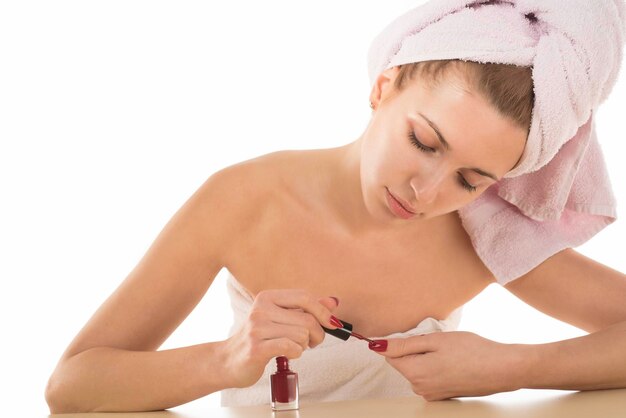Understanding Fungal Acne: A Comprehensive Guide to Skin Health
Everyone desires clear, blemish-free skin. Yet, many find themselves fighting an uphill battle against a host of unexpected skin concerns. Among these, fungal acne has emerged as a common culprit, often misunderstood and frequently misdiagnosed. But what exactly is fungal acne, and how does it differ from the more common type of acne we're all familiar with? Let's dive into the ins and outs of this condition, exploring its causes, symptoms, and effective management strategies.
What Exactly Is Fungal Acne?
Despite its misleading name, fungal acne isn't actually acne. It is a skin condition caused by an overgrowth of yeast known as Malassezia. This yeast is naturally present on human skin and typically harmless. However, when its growth goes unchecked, it can lead to an itchy, acneiform eruption commonly mistaken for bacterial acne.
How It Differs from Regular Acne
It's crucial to note that traditional acne, known as acne vulgaris, is caused by bacteria, clogged pores, or excessive sebum production. In contrast, fungal acne is driven by yeast, thus requiring an entirely different form of treatment. Misdiagnosing fungal acne can lead to ineffective treatments, often exacerbating the issue over time.
Recognizing the Symptoms
Many people struggle with fungal acne because it shares several characteristics with its bacterial counterpart. However, a closer examination reveals distinct features.
Signs to Look For
- Uniform Bumps: Fungal acne usually presents as small, uniform, red bumps. These are often itchy and can occur anywhere on the body but are most prevalent on the chest, back, and forehead.
- Persistent Itchiness: One standout symptom of fungal acne is its itchiness, which is not as common in regular acne.
- Cluster Formation: Unlike bacterial acne that appears sporadically or as individual pimples, fungal acne tends to form clusters of pustules.
Understanding these signs can enable better identification and management of the condition.
What Causes Fungal Acne?
Several factors can contribute to the development and worsening of fungal acne. Understanding these can empower you to implement preventative measures.
Potential Triggers
- Hot and Humid Climates: Warm, humid environments create an ideal breeding ground for yeast overgrowth.
- Sweat and Friction: Wearing tight or non-breathable clothing can trap sweat and promote yeast growth.
- Oily Skin Products: Skincare products high in oil can encourage Malassezia overgrowth.
- Antibiotic Use: Overuse of antibiotics can disrupt the skin's natural flora, allowing yeast to multiply.
Acknowledging these triggers can help mitigate risks and manage existing symptoms effectively.
Effective Management Strategies
If you recognize symptoms of fungal acne, the next step involves exploring ways to manage it, reducing discomfort and preventing recurrence.
Over-the-Counter Solutions
While professional diagnosis and treatment are ideal, there are several over-the-counter products that can alleviate fungal acne symptoms:
- Antifungal Shampoos: Ingredients like ketoconazole and selenium sulfide effectively combat yeast when used as a body wash.
- Sulfur-Based Products: These can decrease yeast growth and alleviate symptoms.
- Tea Tree Oil: Renowned for its antifungal properties, it's a natural alternative for treating fungal conditions.
Lifestyle Adjustments
- Wear Breathable Fabrics: Opt for loose, cotton clothing to reduce sweat buildup.
- Shower After Sweating: Promptly showering after workouts can minimize yeast growth on the skin.
- Modify Skincare Routine: Replace oil-based products with water-based alternatives that do not encourage yeast proliferation.
Implementing these practices into your daily routine can drastically reduce the risk of developing fungal acne.
Debunking Common Myths
Any skin condition can be clouded by misconceptions, and fungal acne is no exception. Let's clarify some myths surrounding this misunderstood issue.
Common Misconceptions
- Fungal Acne is Contagious: Unlike bacterial infections, fungal acne isn't contagious and cannot be spread through contact or sharing personal items.
- Poor Hygiene is the Main Cause: While hygiene can play a role, it's not the primary factor. Other genetic and environmental variables often have a more significant impact.
- Only the Face is Affected: Fungal acne commonly appears on the body, such as the back, shoulders, and chest, not exclusively on the face.
Dispelling these myths can foster a better understanding and appreciation of the condition's nuances.
When to Seek Professional Help
It's essential to know when self-care measures aren't sufficient. Recognizing when it's time to consult a professional ensures that you receive the appropriate treatment.
Indicators for Medical Consultation
- No Improvement with OTC Products: If you're using over-the-counter remedies and see no results, it might be time for medical intervention.
- Worsening Symptoms: An increase in severity or discomfort warrants a professional's insight.
- Unclear Diagnosis: If you're unsure whether your symptoms align with fungal acne, a dermatologist can provide clarity and guide you toward effective treatments.
Trusting an expert to confirm your condition and recommend a treatment plan can prevent prolonged discomfort and ineffective self-treatment.
Final Thoughts
Fungal acne, although frustrating, is manageable with the right knowledge and approach. By understanding its unique characteristics, causes, and potential solutions, you can take meaningful steps towards healthier skin. Remember, maintaining a proactive skincare routine and being mindful of environmental factors can make a significant difference. Whether you're experiencing mild symptoms or need professional input, embracing informed decisions empowers you to regain control of your skin health.
Summary: Key Takeaways for Managing Fungal Acne
- Identify Symptoms: Look for uniform, itchy bumps often forming in clusters. 🧐
- Know the Causes: Be aware of triggers like humidity, sweat, and oily products. 🔍
- Consider OTC Products: Use antifungal shampoos and sulfur-based treatments. 🛒
- Implement Lifestyle Changes: Choose breathable fabrics and adjust your skincare routine. 🧴
- Seek Professional Help if Needed: Consult a dermatologist if symptoms persist or worsen. ⚕️
By understanding and managing fungal acne, you can enjoy clearer, healthier skin, free from the confusion and frustration this condition can bring. 🌟
